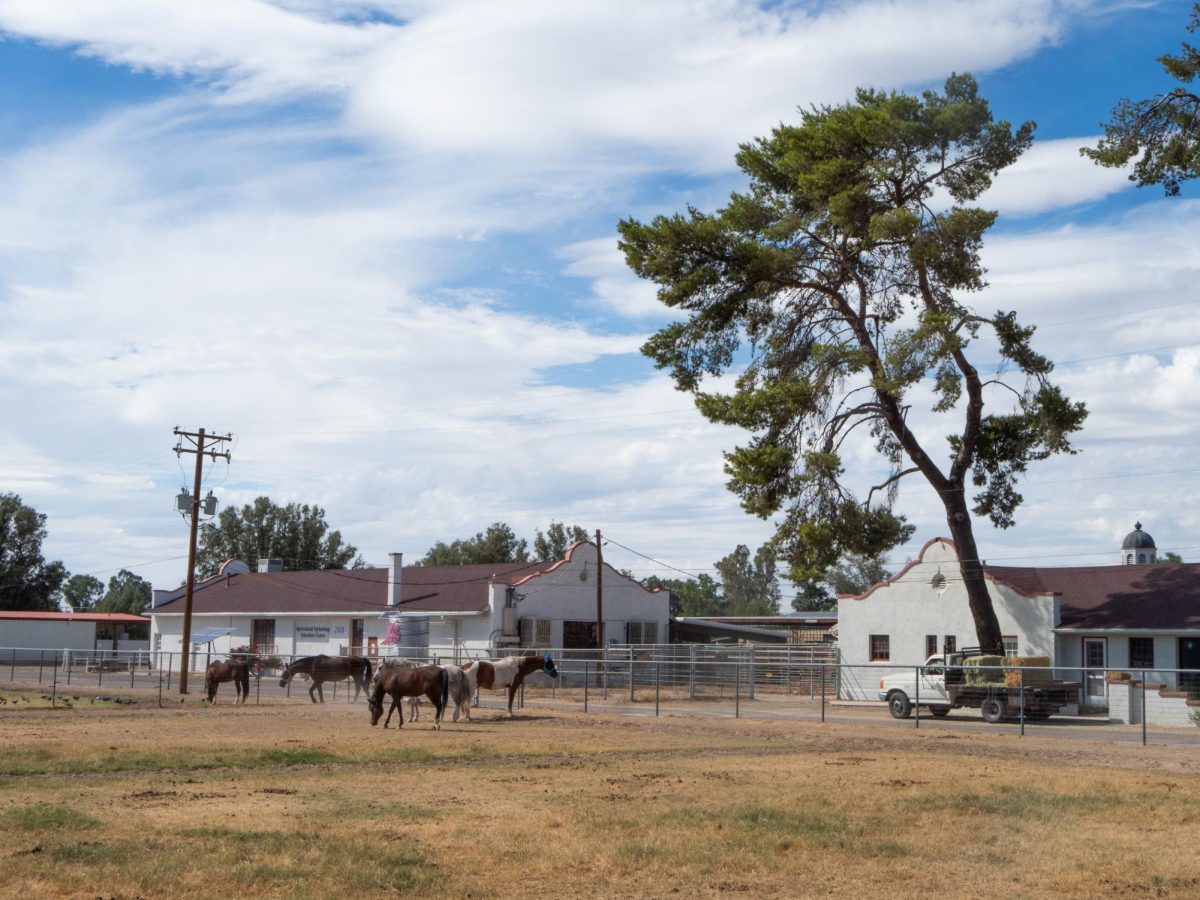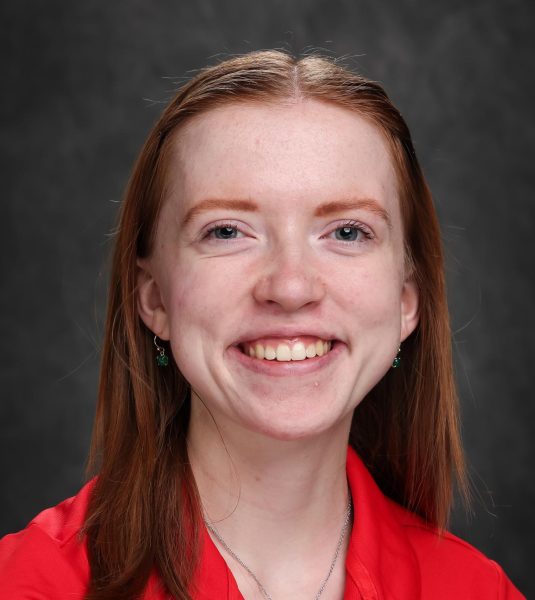A group of University of Arizona experts recently released a report detailing threats to Arizona’s agricultural sector and recommendations to combat these threats.
The Presidential Advisory Commission on the Future of Agriculture and Food Production in a Drying Climate was created by President Dr. Robert C. Robbins in 2022 to propose solutions to the challenges facing agricultural production not only in arid climates in the Southwest, but also on a global scale. The commission, composed of experts from across the university, spent six months speaking with community members, other researchers and stakeholders and used the information they gathered to create a list of five recommended actions for the university to take.
These actions include:
- The creation of an institute for sustainable food, water and agriculture systems
- The creation of a center for soil health
- The creation of technology and innovation hubs at the Maricopa, Yuma and Campus Agricultural Centers, as well as Biosphere 2
- The expansion of partnerships with the tribal agricultural community
- The establishment of new and strengthening of existing collaborations with institutions in arid regions around the world
The urgency that compelled the creation of this commission was not linked to a singular event, but rather a “growing concern” about issues of water, food, environmental sustainability, agriculture across the country and more, specifically in the southwest U.S., according to Laura Condon, associate professor in the Department of Hydrology and Atmospheric Sciences.
According to Arizona’s quarterly drought status update, from the months of April-June, “extreme (D3) long-term drought remained in small areas of Maricopa, Mohave, La Paz, Coconino, and Yuma counties, as did Moderate (D1) and Severe (D2) long-term drought. Exceptional (D4) long-term drought remained in southwestern La Paz County. Eastern and southern counties, as well as most of Gila and Pinal counties, continued without long-term drought.”
It is in the context of these drought conditions and the aridification of regions across the globe that this commission was formed and worked on this report, titled “The Future of Agriculture & Food Production in a Drying Climate.”
Contrary to popular belief, Arizona is in many ways an ideal location for crop production, and agriculture accounts for 72% of the state’s water usage, making water scarcity a huge threat for agricultural production in Arizona.
“There’s just lots of metrics for efficiency, but one metric you can think about is per drop of water applied, how much crop we grow, how much nutrients do you provide that you can then sell in the marketplace,” Condon said. “We do not have that many pests and natural disasters; as long as you have the water, we have great growing conditions and sunshine year round that actually makes it possible for a drop of water used to produce a lot of crops in Arizona. And that means, by a lot of metrics, it is actually a very efficient place to be growing crops.”
The commission report emphasized this long history of agricultural production and water conservation and its recommendations work to improve upon it. The commission also encouraged the growth of partnerships with tribal communities, who have their own rich history and knowledge of agriculture that the university has much to learn from, according to Condon.
While partnerships exist between the UA and these communities, they are not as “systematic” or “expansive” as they could be, according to Sharon Megdal, director of the Water Resources Research Center at the UA.
“It’s not for us to come in and say this is the answer. It’s really to have a collaboration and partnership with these tribes, and I think what you’re seeing now is we’re building up relationships of trust with the tribes so we can actually have an approach; these are assets, these are resources that might be able to assist you,” Senior Vice President for Native American Advancement and Tribal Engagement Levi Esquerra said.
The university’s Cooperative Extension offices are prime examples of this collaboration in action. These offices are located in all 15 counties in the state and five of the state’s 22 tribal communities, and they connect said communities with research and resources from the University of Arizona.
The expansion of these relationships involves two-way communication and the development of mutual trust. According to Megdal, throughout the process of drafting the report, the commission took part in listening sessions and engaged with community members in order to bridge the gap between scientific research and the practical needs that farmers and people in rural areas have.
A difficulty arises in that not all rural communities have the same needs. Esquerra noted that there is no “one size fits all approach” when it comes to these agricultural solutions, but an important way of becoming familiar with these diverse needs is “taking the time to listen, learn.”
“We can be conveners, we can bring people together and have learning opportunities across different segments of the agricultural communities, or different communities across Arizona. The situation is different by community, and they differ across tribal communities, they differ across non tribal communities in terms of water availability, impacts of development, housing developments and changes in land ownership. And so you really have to become familiar with the communities,” Megdal said.
The next steps for the execution of these recommendations lie with the implementation committee, which is currently being formed. Condon and Joaquin Ruiz, the director of Biosphere 2, will be in charge of this commission, which will be composed of leaders from across campus, according to Condon.
“The goal of the implementation commission is to figure out exactly what the timeline is and how these things should be implemented. We recognize that, as I said before, there’s lots of people at basically every part of campus that are thinking about food and water just because of the landscape that we’re in, like there are people thinking about it from every angle,” Condon said. “So our goal is to really strategically implement these ideas with a lot of buy-in from across campus connecting a lot of groups. It’s going to be much more collaborative.”
On a broader scale, beyond just university partnerships, the report recommended that the university look to international partnerships that could help fuel research and solutions.
The UA is already working with multiple international partners, including the French National Centre for Scientific Research (CNRS) and the Arava Valley region in Israel. With this Arava Valley partnership, the UA has helped to create and sustain the Kasser Joint Institute for Food, Water and Energy Security, which aims to create “innovative technology that builds capacity for food, water, and energy security in vulnerable communities in arid and hyper-arid environments — with a focus on Africa,” according to the Institute’s site.
The university, spurred on by the recommendations of this report, is looking to strengthen pre-existing international partnerships like these, while also developing new ones with other global regions experiencing aridification.
“There’s a lot of places that are facing aridification right now, and so they are looking to places like us that have already been figuring out and learning how to do this sustainably in an arid environment,” Condon said. “They’re looking to places like us to learn what to do. So I think it’s the place where we have a real opportunity for leadership and to really be in that sustainability space.”
This collaboration, and the implementation of recommendations from the commission, depend on the perception of issues from new perspectives. The implications of every action must be understood at the levels on which they will have the greatest impact before they can be carried out, according to Megdal.
“Even at the small scale, farmers […] look at what makes sense from the economic point of view. I think things like the irrigation efficiency incentive program that cooperative extension is implementing, with some governors funds that were allocated last year, are examples of the university coming to the forefront of running a program, evaluating the program so you can look at the implications,” Megdal said. “But I do think we need to remember that people are responding to the economic incentives that are there in front of them. Some of that is now made harder by the scarcity of water. And it’s not like we just can say this is what you ought to do. We have to look at the feasibility of doing these different things and I think that’s what we’ll do a lot over time.”
Within this discussion of economics, one problem the implementation committee will be tasked with solving is that of funding. According to Condon, the initial commission was intentionally vague about where funding for these different initiatives would be sourced, partly because they felt it was too early in the planning stages to attach specific monetary value to these recommendations.
“We’re really interested not just from a funding perspective, but in terms of making a bigger difference in setting up a lot of these things as public-private partnerships where we have industry really engaged from the get go,” Condon said. “But in terms of specific funding, I can’t say where, like, any of the specific money is coming from, at this point. That’s really, like, our next steps to figure that out.”
As these recommendations are discussed and implemented, Condon is optimistic that there will be a variety of opportunities for students to engage with this research and potential solutions.
“I think it’s [going to] make a difference for students because we’re really thinking about programs that can help students. We can help educate the next generation of farmers and have more immersive educational experiences through the [agriculture] innovation hubs that we’re planning. And, hopefully, relevant and marketable training options for undergrads and grad students to get them really great experience in this field,” Condon said.
Follow the Daily Wildcat on Instagram and Twitter (X)










